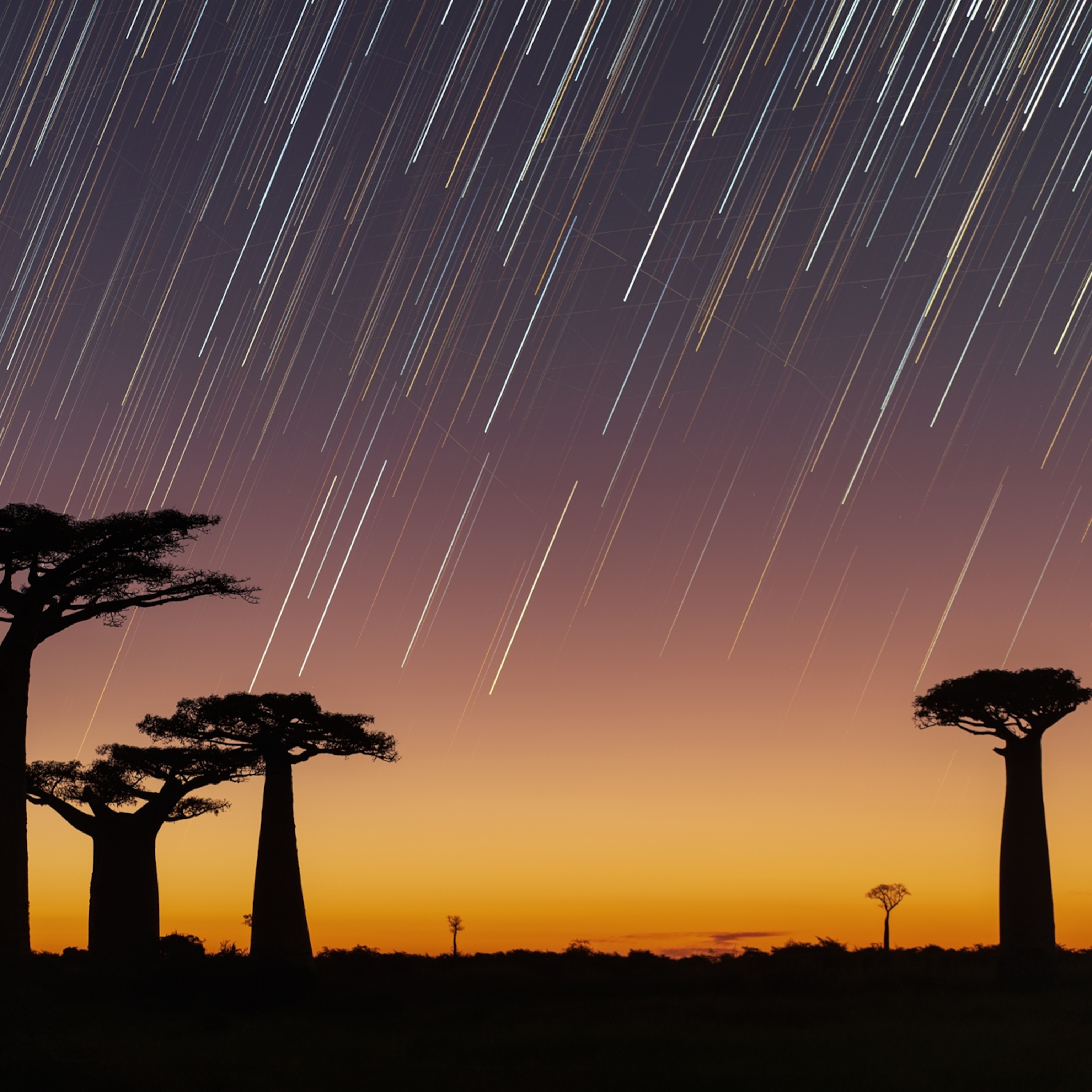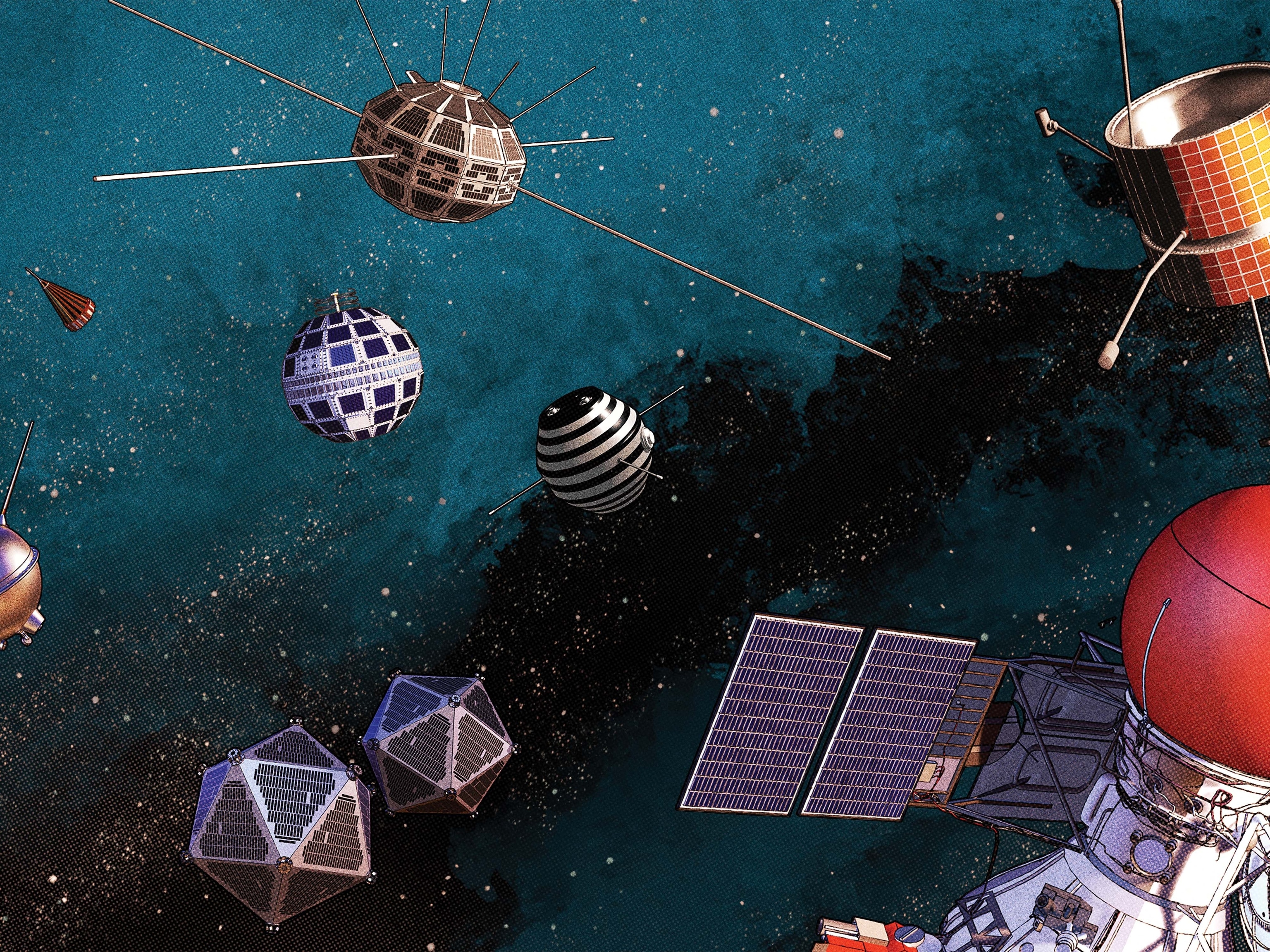Extreme 'ghostly' particles detected in our galaxy for the first time
High-energy neutrinos, formed from violent astronomical events, were previously only found in galaxies with very active black holes.

One afternoon in January 2022, three scientists huddled over the results of their most recent analysis, which had used machine learning to sort through a decade of data from the enormous IceCube Neutrino Observatory, built underground in the remote, icy desert of the South Pole.
Neutrinos, mysterious subatomic particles that originate from violent astronomical events, such as star explosions and active black holes, are incredibly difficult to detect. Their tiny masses and ability to pass through gas clouds and even solid planets allow them to zip around space nearly unnoticed.
But on that day, for the first time, the researchers saw an excess of neutrinos in the data from our own galaxy, corresponding to the Milky Way’s central band of stars that arcs across the sky. (See photos of the IceCube observatory.)
“We've been looking at the Milky Way for millennia, and us three are the first ones to see it in something other than light,” Naoko Kurahashi Neilson, a physicist at Drexel University, told the other two researchers, graduate students Stephan Sclafani and Mirco Hünnefeld, that day. “Don't let the romance of this moment slip away.”
Because neutrinos carry valuable information about the universe, the discovery means that our galaxy may be an important piece in understanding how the cosmos’ most energetic happenings unfold, according to a new study from the IceCube team, published June 29 in Science.
Since it went live in 2011, the observatory has only detected neutrinos from outside the Milky Way, mostly in galaxies containing extremely active black holes.
Where particles meet astronomy
For most of human history, observers had one tool to study the cosmos: their own eyes. And what they saw was our sun, the moon, the brightest planets, and the stars in the Milky Way tracing a thick band across the sky.
The invention of telescopes eventually revealed different forms of light, those more energetic than our eyes can decipher, such as exploding stars and the bright environs surrounding active black holes.
But cosmic entities don’t expel only light.
“For generations, astronomers have been trying to map out the full scope of the heavens, and, in optical astronomy that's been tremendously successful,” says John F. Beacom, a neutrino physicist at the Ohio State University who is not associated with the new paper. “In neutrino astronomy, it's just getting started.”
The IceCube neutrino detector, which sits 0.9 mile below the surface, hosts 5,160 basketball-size modules encased in a cubic kilometer of Antarctic ice. Each of those modules look for light signals created when particles interact with the ice. (Read how neutrinos may travel faster than the speed of light.)
Neutrinos pass through most matter unscathed, although occasionally, one will interact with matter, initiating a series of events that physicists can see with their sensitive detectors. Of the handful that exist, IceCube is the largest.
But there’s also a lot of particles zooming through that scientists don’t want. “Searching for neutrinos is always very difficult, because we have to fight many backgrounds,” says Elisa Resconi, an IceCube team member at Germany’s Technical University of Munich.
One way to help weed out unwanted particles is by using Earth itself as a shield. Although IceCube is based in Antarctica, most of its detections focus on the northern sky. But the Milky Way’s center and its most active locations are visible only from the southern sky. That means the researchers had to use creative methods to dig through the background and pull out the signals corresponding to neutrinos.
So Kurahashi Neilson, Sclafani, and Hünnefeld trained a program to scour through IceCube data collected between May 2011 and May 2021 and select a specific type of signal, ones that look like a blob or burst in the detector. These are called “cascade” events, and they occur from a neutrino slamming into an ice particle within the detector and releasing the energy quickly. This type of signature, though, doesn’t trace easily to a source location on the sky. Instead, it’s akin to the blurry vision you might have if you neglect to put your glasses on, says Kurahashi Neilson.
Don't let the romance of this moment slip away.Naoko Kurahashi Neilson, Drexel University physicist
When they looked at the results, in January 2022, the researchers saw an obvious glow dispersed along the galaxy’s plane and toward its center.
Deciphering a long-standing question
What is causing this galactic neutrino glow may tie to a 110-year-old mystery surrounding particles known as cosmic rays, says IceCube Principal Investigator Francis Halzen, of the University of Wisconsin-Madison. (Read: Origins of mystery space radiation finally found.)
These are high-energy protons and other particles that meander through the universe, including our galaxy’s disk, following the paths drawn by magnetic fields. Physicists have known since 1912 that cosmic rays exist and bombard Earth, but they still don’t know what energizes these particles to such extremes.
They do know, however, that when cosmic rays interact with matter, they generate high-energy neutrinos. (Similar to how light comes in different energies, so do neutrinos. The sun, for example, releases much lower-energy neutrinos; those detected in 2013 were high energy.)
So, it’s possible these newly detected neutrinos may be the result of cosmic rays colliding with the celestial stuff of our own galaxy. IceCube could also be seeing signals from individual energetic objects, like supernova explosions, that boost protons to extreme energies that then slam into that galactic gas. It will take at least another few years to reveal what this glow is, say researchers.
Expanding the hunt for neutrinos
Another large-scale neutrino detector, soon to become operational in the Mediterranean Sea, should help. The KM3Net, a kilometer-size instrument, follows a similar principle as IceCube.
When a neutrino collides with a water molecule, for instance, lines of detectors will see flashes of light. Because KM3Net is situated in the Northern Hemisphere, it can use Earth to block out much of the background as it looks toward the galactic plane. This should disentangle even more mysteries surrounding neutrinos and their role in cataclysmic events.








